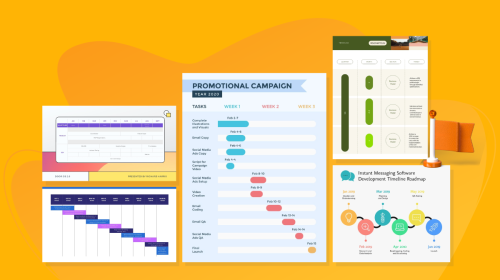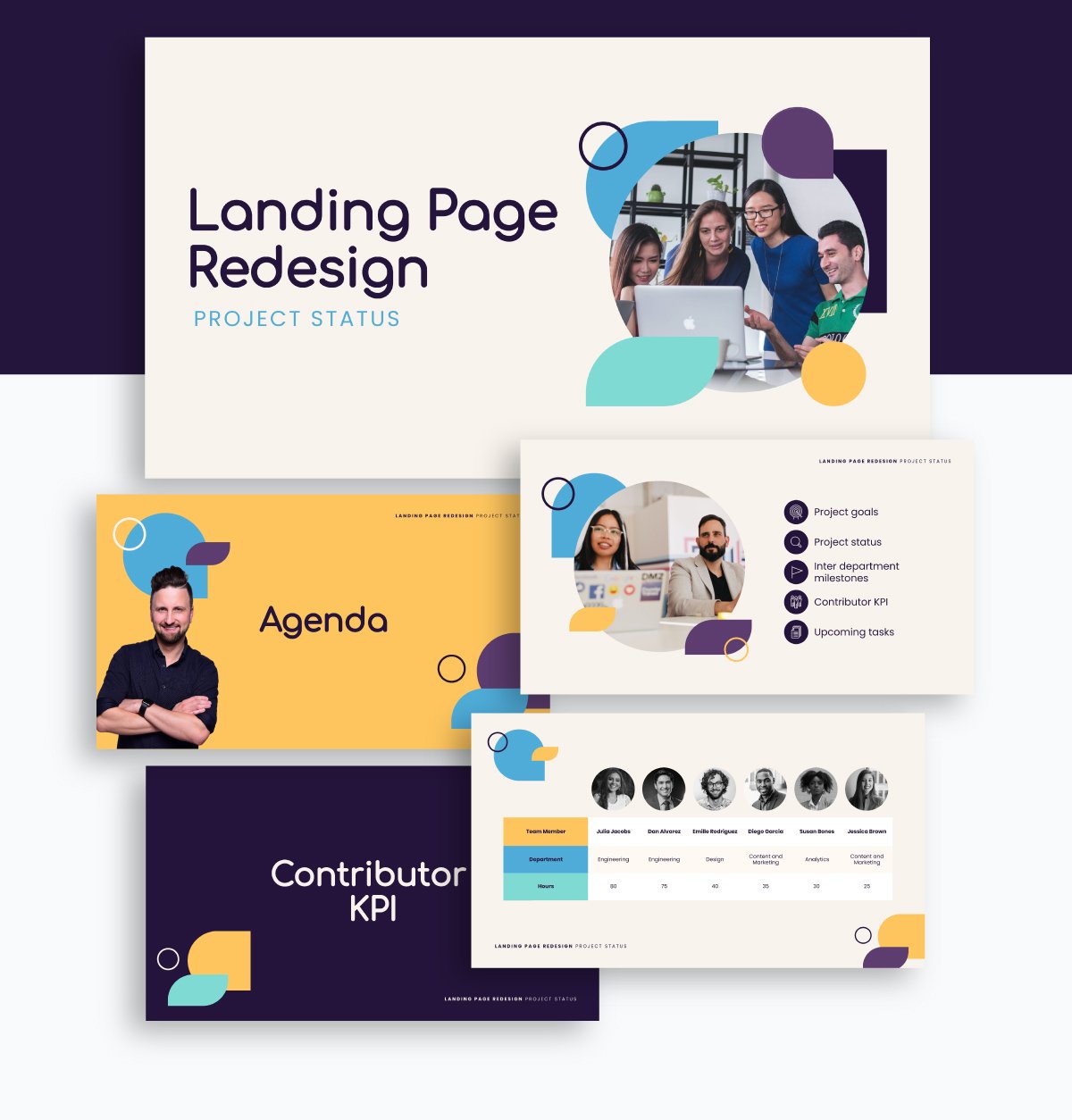
6 Stages of the Project Management Life Cycle


Every successful project follows the project life cycle — even if it was never explicitly outlined.
That’s because the project management life cycle is universally effective.
By following each step of each stage, you could do anything, from organizing a kids’ soccer team to coordinating change management across a global corporation.
In this article, we'll walk you through the six stages of the project management life cycle. We've also included templates for each stage to help you better plan, execute and manage your projects.
The project management life cycle (or, the project life cycle) is a framework that helps project managers oversee projects from start to finish. It's made up of 6 key stages:
The infographic below summarizes the important aspects of each stage.

Traditionally, there have been five steps to the project management life cycle. But that’s been in dire need of an update for at least the last 5 years.
Because while the five steps are logical, coherent and analytical, there’s a piece missing right at the end that ensures the next project is even better: post-project optimization.
These six stages keep the project on track, hitting standards of quality — and most importantly — support stakeholder buy-in by answering these questions:
To answer “why are we doing this?”, you need to kick off your project initiation.
At this stage, you’re working on the “what” and the “why” of the project, where your responsibility is to prove the project is both valuable (has a worthwhile return of investment for undertaking the project) and is feasible (aka achievable).
During the initiation stage, the project manager is responsible for meeting with the client and stakeholders, and better understand the goals, feasibility and requirements of the project. Only then will they be able to assemble the right team for the project and plan for it accordingly.
Project managers can organize all of this information into a document called a project charter. As the guiding document for the project, a project charter covers:
Let's take a look at these items in more detail:
The most important item to include in your project charter and to identify during the initiation stage are the high-level goals and objectives of your project. This is a statement of:
By detailing these three aspects, you’re able to definitively show at what point your project has been a success or reached its conclusion.
A big part of the project initiation phase is assembling a team for the project, and assigning roles and responsibilities to each team member.
You’ll want everyone involved in your project to know what their part is, what’s expected of them, and what they’ll be held accountable for.
You might want to create a project organizational chart like the one below:

The more buy-in and understanding you have with allocating positions and responsibilities, the less likely there’ll be confusion or finger-pointing later on.
Anything that limits your project is a constraint. For example, you might have a limit of time for certain parts of the project (for example, you might only have access to a subject matter expert for two days.)
Knowing your constraints gives you the chance to organize your timeline and budget around them.
Your project budget is the estimate of all the expenses that go into making your project successful. You’ll have to consider where it’s being drawn from, where it’s going and how you can get the best possible outcome for every dollar spent.
When budgeting, you should think about both the best case and worst case scenarios, and plan accordingly.
At this stage, you don’t need to get granular on how long every task involved in the project should take. Instead, try to create a high-level timeline of the major parts, phases, or milestones of the project, and estimate the time between each.
Here's a timeline template you can use for your own projects:

At the end of the initiation phase, you should bring all the relevant stakeholders to go over the charter. You’ll be able to get feedback early, make tweaks and adjustments where necessary, and get valuable buy-in.
In the way that initiation is the “what” and “why,” project planning is the “how.”
This is where you’ll be spending the majority of your time. A well-written project management plan will get you to your project’s goal on time, under budget and hitting the right level of quality.
Consequently, a badly laid plan could have you running enthusiastically in the wrong direction.
Here's a ready-made project plan template from Visme you can use right away:

Your project plan should include some key elements:
Poor communication can undo even the best laid plans, so it’s vital that you have a communication strategy ready. This will involve things like:
Here's a communication plan template you can use for your own project:

A project roadmap is a combination of the timeline and project milestones you’re attempting to meet during the course of the project. It's literally a "roadmap" of the journey your project will take to completion.
Below is a roadmap template you can use for your next project:

Unlike the documents you prepared during the initiation stage, your project roadmap will go in more detail into the specific deliverables, deadlines and milestones of the project.
Limits on exactly what the project will and will not cover will (hopefully) prevent scope creep. The more your project expands, the less likely you’re going to hit your targets, and the more likely your goals will become unwieldy.
Knowing where your money is going, who it’s going to and who is spending it before the project begins makes it easier to keep your project’s spend predictable and even flexible.
Below is a budget template you can use as part of your project planning process:

Make sure you include everything in your budget, from variable and operating costs to materials to labor to fixed costs. It will be useful to compare these budgeted costs with your actual costs at the end of the project to analyze and improve in the future.
Where budget is about money, resource is about time. It should be clear to all stakeholders how much time should be given to the project, whether that’s in work hours or in access to the products, materials and space needed for it to be successful.
To avoid being handed work that’s less than exemplary, you should invite stakeholders to set and agree to their own standards of quality. This gives them the chance to take responsibility in their areas and the motivation to achieve them.
Knowing what might go wrong gives you an advantage if it does go wrong. Your risk assessment plan should note what might interfere with the project’s success, as well as how critical that interference is, and ways you can overcome them if they eventuate.
If you’re not keen on creating your own project plan from scratch, you can check out Visme’s huge range of project plan templates.Once you’re confident in your project plan, you’re ready to execute on your project.
This is where thinking becomes action, and stage 3 (execution) and stage 4 (monitoring) happen simultaneously.
Project execution is specifically about getting things done. Ensuring that tasks are completed as planned and on time is a key responsibility in your role as a project manager.
Below are some of the things you'll be in charge of during this phase:
Where project execution is about things to be done, monitoring and controlling are about assessing and acting on the things that have been done.
As mentioned above, this stage will happen simultaneously with the execution stage so the any issues can be fixed early and the project direction can be pivoted as needed.
Here’s what you’ll be monitoring and controlling as a project manager:
We recommend asking your project lead for a consolidated project status report monthly, quarterly or weekly to stay updated with your team's progress.
Here's a project status report template your project team can use:

Project status reports could be provided in either document or presentation format, depending on what you, the client or the stakeholders prefer.
Effective project closings are about reflection and analysis, where you assess how the project went, what went wrong, what could do better, and how to prepare better for next time.
During your project closing, you should take care of the following:
Those accountable for specific tasks or outcomes for any project should sign off on the work they’ve provided. It can be formal, like signing a written document, or informal, with a reply to an email or a quick ‘yes’ in a Slack channel.
This is the retelling of the story of your project, covering:
It serves as a summary that you or others can learn from when running future projects.
Here's a KPI report template you can use for evaluating your projects:

Asking everyone involved in the project how they felt about its execution, and what they think could be done better, will identify gaps you might never have thought of.
There’s a few key things to keep in mind when surveying stakeholders:
Make sure you visualize your survey data to understand the results and interpret them effectively and accurately. Below is a survey results template you can use to visualize your survey data:

But after sign-off, review and getting back your survey data, there’s one crucial thing left to do…
It’s good to learn from your project so you’re better prepared for the next one.
But it's even better to act on it before the next project begins.
Post-project optimization is all about implementing the changes that will improve the success of your future projects. Here are a few examples of post-project optimization in action:
Post-project optimization sounds simple, but the reality can be challenging.
At the end of a project, it’s likely you and every other stakeholder will be tired and want to cruise at work for a while.
But if you can maintain their energy into post-project optimization, you’ll find yourself working towards positive changes instead of hitting the same problems.
If you’re looking for an easy way to keep every team, every report, and every document look, feel and live on-brand during your project management life cycle, check out Visme.
It’s a tool even the most data-obsessed spreadsheet wrangler can use to make professional, on-brand reports and documents.
Learn more about Visme’s brand management tools and features.
Design visual brand experiences for your business whether you are a seasoned designer or a total novice.
Try Visme for free